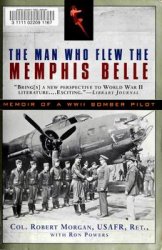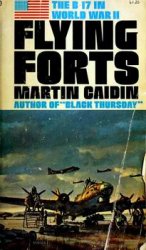Halit Eren
It was Egypt’s fate to be ruled from the Tulunid period (868-905) until 1952 by a succession of individuals who were all (with the exception of the Fatimids) of Turkish origin or had been raised according to the traditions of the Turkish state. Within this lengthy period, the era of Ottoman rule holds a position of particular significance in that the Turkish culture of that time left traces, some of which remain visible to this day. That said, the Turkish culture of the days of Muhammad ‘Ali Pasha (1805-48) and his descendants was of particular and unprecedented impact in a number of fields, including language, education, and military life.
Professor Ekmeleddin ihsanoglu has enjoyed, and continues to enjoy, an intimate and uninterrupted relationship to Egypt. This relationship is clearly reflected in the programs and activities of the Research Centre for Islamic History, Art and Culture (IRCICA) over the past thirty years, during which he was its director general and before his election as Secretary General of the Organisation of the Islamic Conference (OIC). During this period, Egypt was fortunate enough to be involved in a significant portion of IRCICA’s activities and publications, whose scope ranges from conference and seminar proceedings and minutes to books, series, and more. Egypt was, for example, chosen as the subject of a special series entitled al-Tarikh wa-l-thaqafa al-Turkiya fi-Misr (Turkish History and Culture in Egypt), the first title in which was published in 2001 as Misrfi - ‘adasat al-qarn al-tasi ‘ ‘ashar (Egypt as Viewed in the Nineteenth Century) and which consists of an album of historical photographs of Egypt from the Yildiz Palace collection. This was followed by two books on Turkish culture in Egypt approached from differing perspectives. The first of these, by Muhammad Abu al-‘Amayim, was entitled Athar al-Qahira al-Islamiya fi-l-‘asr al-‘Uthmani (Islamic
Monuments of Cairo in the Ottoman Period) (2003) and surveyed the built fabric of Cairo from the beginning of the Ottoman period until the age of Muhammad ‘Ali (1517-1805), including mosques, madrasas, and takiyas (Sufi lodges). The work was edited under the supervision of Prof. ihsanoglu, who quickly followed it with a book, written in collaboration with Salih Sadawi, entitled al-Thaqafa al-Turkiya fi-Misr: jawanib min al-tafa ‘ul al-hadari bayn al-Misriyin wa-l-Atrak (Traces of Turkish Culture in Egypt: Turkish Words in Egyptian Popular Language, with a Glossary) (2003), in which he deals with cultural interaction between Turks and Egyptians in Egypt from the Tulunids to the French Expedition (868-1798) in the areas of language, literature, the arts, thought, customs and practices, and so on. The work includes an important lexicon of Turkish words that have entered Egyptian colloquial Arabic.
In addition to his role as author and editor of publications issued by IRCICA, Prof. ihsanoglu has followed the progress of other works with close attention to the place of publication. Among these are Awqaf Misr qabl wa-khilal al - ‘ahd al - ‘Uthmani (The Religious Endowments of Egypt, before and during the Ottoman Period), compiled by Aydin Ozkan and published by the iSAR Foundation (2005).
The Turks in Egypt and Their Cultural Legacy is another such work, in that it treats a number of different aspects of Turkish culture from the period of Muhammad ‘Ali to the present, as seen through the books printed in that country in Turkish. The work is divided into three parts. Part One is entitled “The Turks and Their Culture in Egypt since the Nineteenth Century” and discusses the pervasive role of Turkish culture and language in the life of society, both in the khedive’s palace and surrounding circles and in the bureaucracy, the army, and education. It also discusses the books translated from different languages into Turkish and their resonances in society. Part Two, entitled “Printing in Egypt and Works of Turkish Culture Printed There,” briefly discusses the Bulaq Press, which played an important role in the printing of Turkish books in Egypt, as well as other presses that participated in the same endeavor. Part Three is entitled “The Vessels of Turkish Printed Culture in Egypt: Annotated Bibliographical Lists,” and forms the backbone of the study in that it contains lists of the Turkish books and periodicals printed and published in Egypt as well as of books translated from Turkish into Arabic and printed in the same country.
The book is thus a study of great scope of a sort that only Prof. Dr. ihsanoglu could see through successfully. Such success should not, however, surprise us, given that he was born and raised in the last remaining Ottoman environment, in Egypt, and thus imbibed its culture in all its linguistic, literary, traditional, and other dimensions. Without his care and enterprise in researching the background to the topic with the meticulousness and conscientiousness of an academic and man of culture, we would not have before us this study, which he himself has described as “the dream of a lifetime.”
Director General IRCICA




 World History
World History









